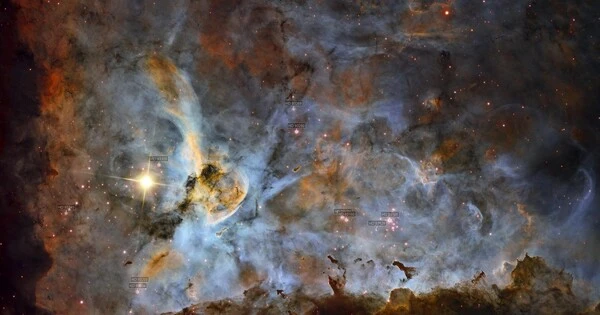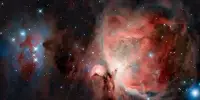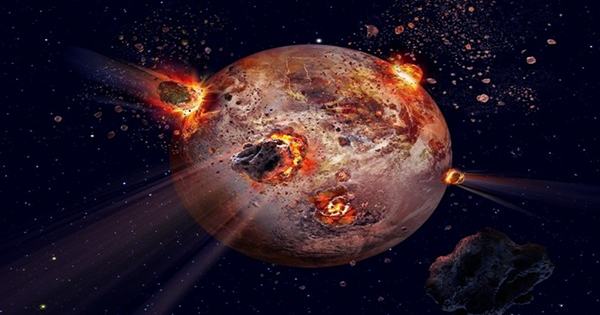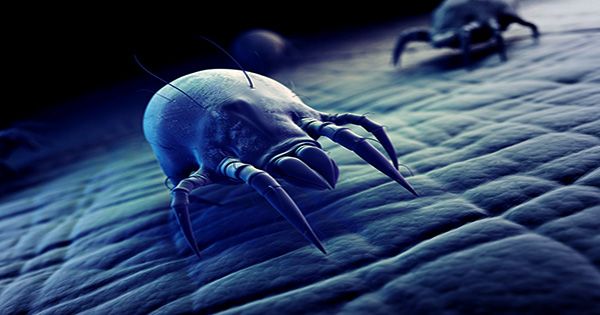HD 93205 is the designation given to a star located in the constellation Carina, which is located in the southern hemisphere of the sky. It is a binary star system composed of two large stars. The star has an apparent visual magnitude of about 6.6, which means it is just barely visible to the naked eye under dark skies. The more massive of the two stars is an O3.5 main sequence star. It is classified as an O3.5V star, which means it is a hot and luminous main-sequence star of the O-type.
HD 93205 is an O-type star, which means it is a very massive and luminous star, with a surface temperature of around 40,000 Kelvin. The spectrum contains some ionized nitrogen and helium emission lines, indicating fusion product mixing and a strong stellar wind. It is located approximately 8,000 light years away from Earth and is part of the Carina OB1 association, which is a group of massive stars that were formed around the same time and are moving together through space. The mass calculated from the orbits’ apsidal motion is 40 to 60 M☉. This is slightly lower than would be predicted by the evolutionary modeling of a star with its observed parameters.
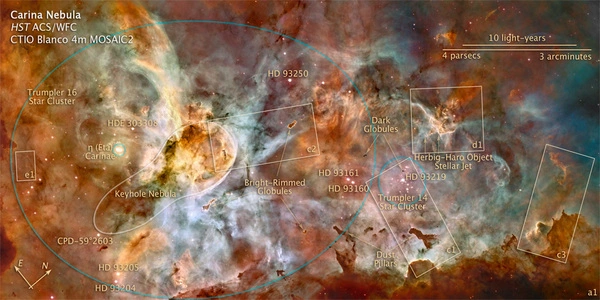
The less massive member is an O8 main sequence star with a mass of about 20 M☉. It moves at over 300 km/s (190 mi/s) in its orbit and is considered a relativistic binary, which causes the apses of the orbit to change in a predictable way. The star has a mass estimated to be around 90 times that of the Sun, a radius of about 15 times that of the Sun, and a surface temperature of about 47,000 Kelvin. It is one of the most massive and hottest stars known, and it is a member of the Trumpler 14-star cluster, which is located within the larger Carina Nebula.
The star is surrounded by a cloud of gas and dust, known as a nebula, which is illuminated by the star’s intense radiation. This nebula is known as the Carina Nebula or NGC 3372 and is one of the largest and brightest nebulae in the sky. It is a popular target for both amateur and professional astronomers due to its striking appearance and the wealth of interesting objects located within it, including star clusters, dark clouds of dust, and regions of active star formation.
HD 93205 is notable for being one of the most extreme and massive stars that have been studied in detail by astronomers, and its properties have provided important insights into the evolution and behavior of massive stars.
